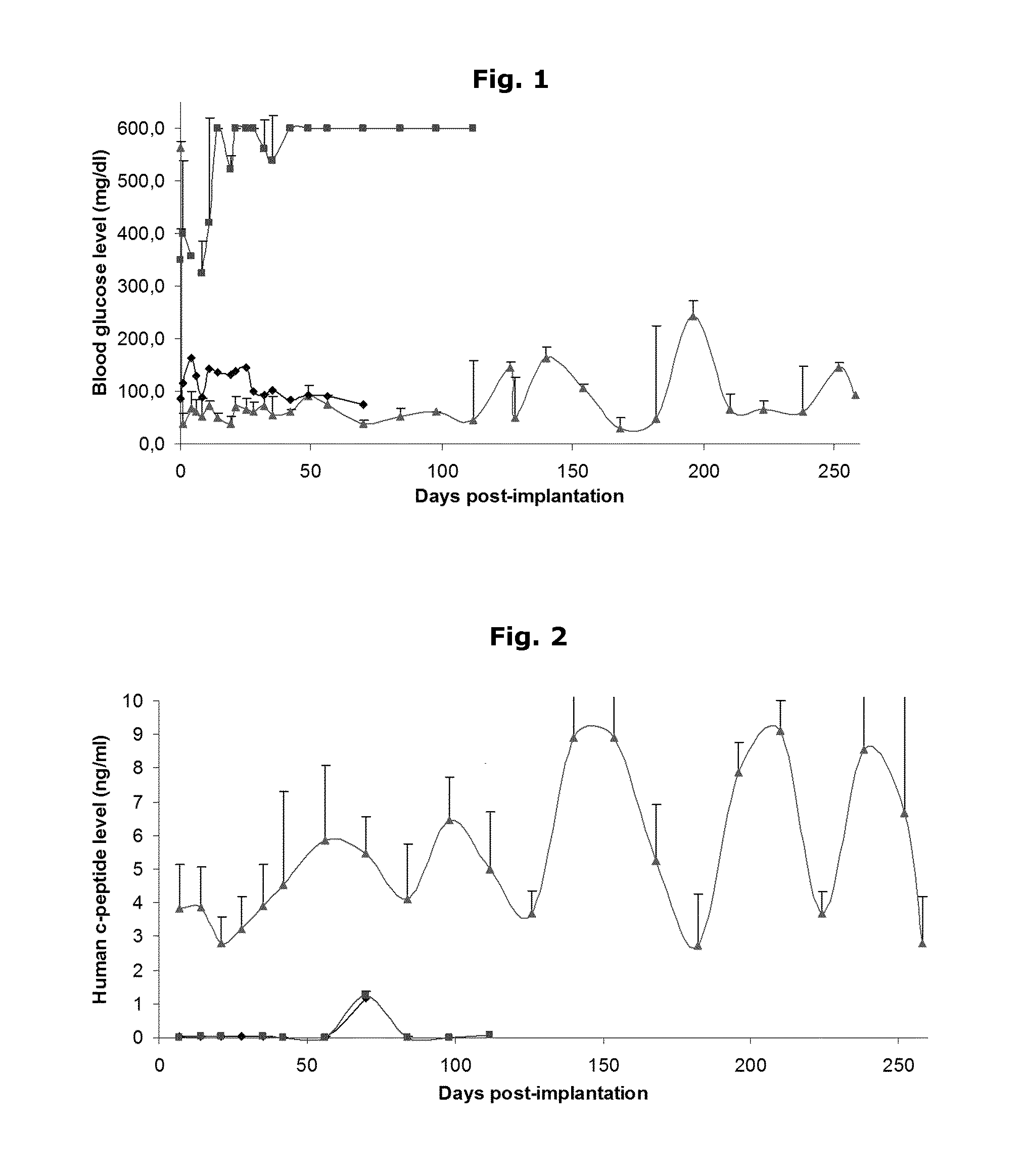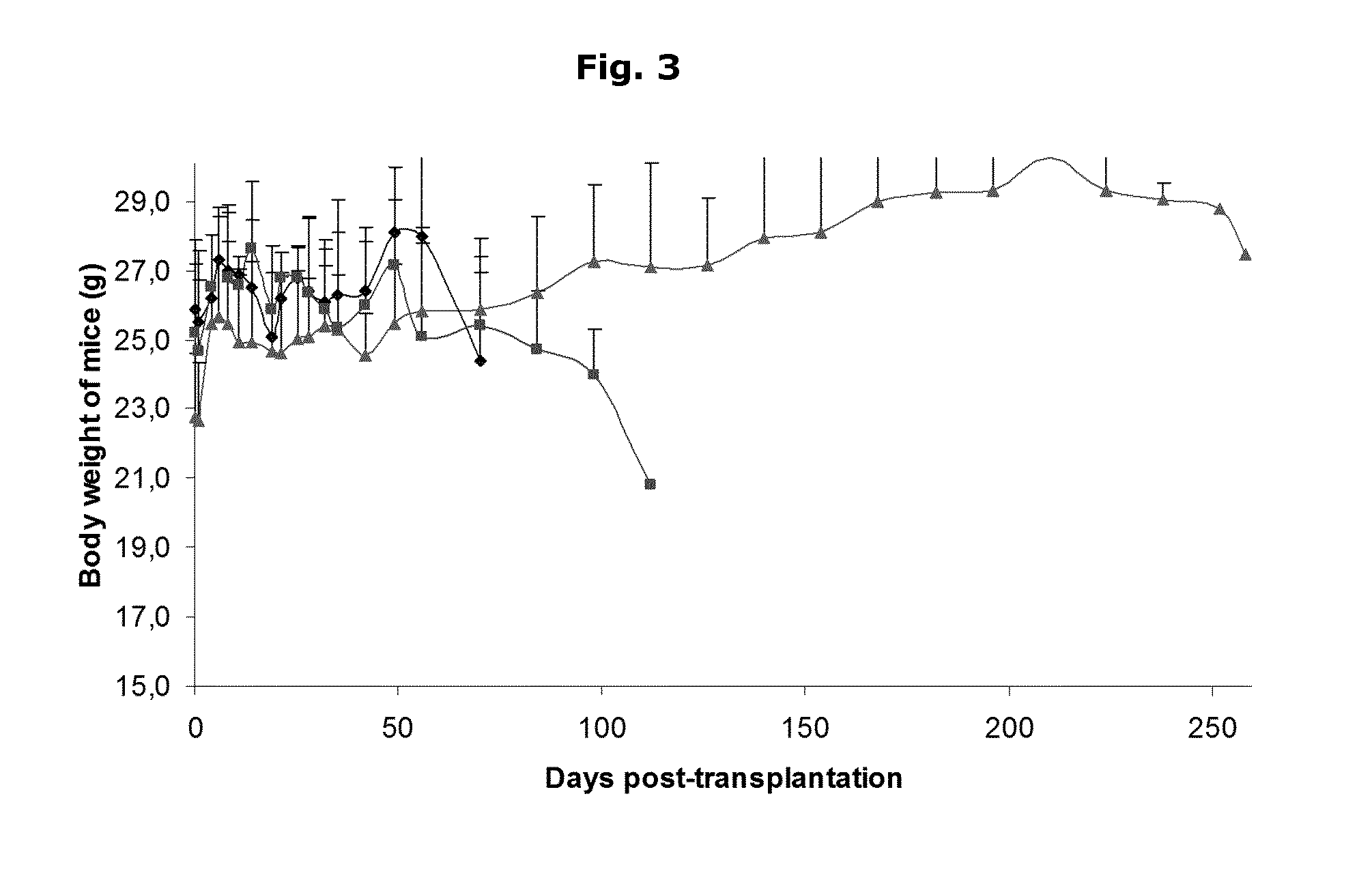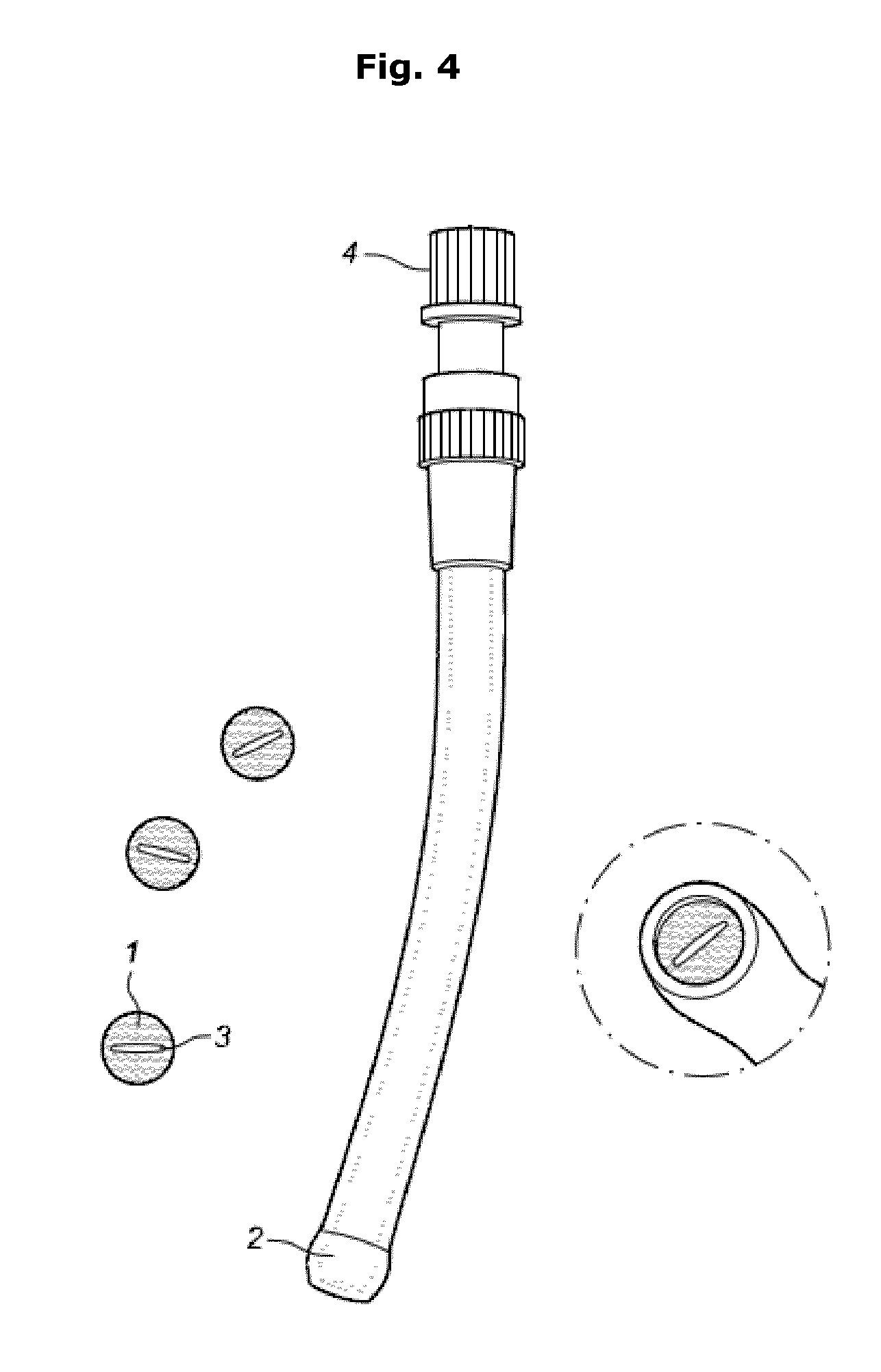Method for encapsulated therapeutic products and uses thereof
a technology of encapsulation and therapeutic products, applied in the field of encapsulation, can solve the problems of affecting cell viability and eventually loss of inner cells, and achieve the effect of improving the stability of alginate-based bio-devices
- Summary
- Abstract
- Description
- Claims
- Application Information
AI Technical Summary
Benefits of technology
Problems solved by technology
Method used
Image
Examples
examples
Exmple 1
Human Islets Encapsulated in Alginate Microparticles—Normalization in Mice
[0052]A coaxial airflow device (a microdroplet generator) in combination with a Barium / Calcium gelling buffer, is used to encapsulate the human pancreatic islets in inhomogeneous alginate-Ca2+ / Ba2+ microparticles.
[0053]a) Cell preparation before encapsulation[0054]the human islet suspension is centrifuged at 270 g (1100 RPM in Beckman GS-6R); 3 min; 15-30° C.[0055]the supernatant (Ham F10) is removed.[0056]the cells are washed twice with NaCl 0.9% with intermediate centrifugation: 270 g (1100 RPM in Beckman GS-6R); 3 min; 15-30° C.[0057]the cell pellet is gently mixed with alginate 1.8% using a pipet until homogeneous suspension is obtained. Human islets are mixed with a 1.8% sterile ultrapure alginate solution to obtain a final cell density between 5-50×106 cells / ml alginate in a 50 ml Falcon tube.[0058]this mixture is allowed to cool on ice for at least 5 min
[0059]b) Encapsulation
[0060]The cells-algi...
example2
Encapsulation of Cells in Alginate Filaments
[0083]Human or porcine beta cells are mixed with alginate 1.8% using a pipet until homogeneous suspension is obtained. Human islets are mixed with a 1.8% sterile ultrapure alginate solution to obtain a final cell density between 5-50×106 cells / ml alginate in a 50 mL Falcon tube. This mixture is allowed to cool on ice for at least 5 min Using a peristaltic pump the cell-alginate mixture is subsequently aspirated out of the 50 ml Falcon tube using a metal hub needle (gauge 16), and advanced through a tubing towards the 22 gauge needle. The tip of the needle is placed in the gelling solution.
[0084]Upon extrusion through the 22 gauge needle the alginate immediately makes contact with the gelling solution (50 mM CaCl2 and 1 mM BaCl2 in 10 mM MOPS, 0.14 M mannitol and 0.05% Tween20, pH 7.2-7.4) immediately forming a cylindrical filament containing cells. Uninterrupted filaments of several meters long can thus be generated.
[0085]In order to obtai...
example 3
Generation of Double Walled Capsules by Consecutive Rounds of Encapsulation
[0091]Cells can be encapsulated in double walled alginate capsules. Doing so, cells or cell clusters trapped near or in the wall of the capsule after the first round of encapsulation will be covered by a second layer of alginate during the second round of encapsulation. By doing so, the exposure of encapsulated cells directly to the body will be even more limited. A direct immune response towards cells extruding from the capsule after a single round of encapsulation can thus be excluded.
[0092]In a first round of encapsulation cells will be encapsulated as follows: using a peristaltic pump the cell-alginate mixture is aspirated out of the 50 ml Falcon tube using a metal hub needle (gauge 16), and advanced through a tubing towards the 25 gauge air-jet needle. Upon extrusion through the 25 gauge air-jet needle droplets are produced by a combination of air shears and mechanical pressure by the peristaltic pump. D...
PUM
| Property | Measurement | Unit |
|---|---|---|
| Fraction | aaaaa | aaaaa |
| Fraction | aaaaa | aaaaa |
| Length | aaaaa | aaaaa |
Abstract
Description
Claims
Application Information
 Login to View More
Login to View More - R&D
- Intellectual Property
- Life Sciences
- Materials
- Tech Scout
- Unparalleled Data Quality
- Higher Quality Content
- 60% Fewer Hallucinations
Browse by: Latest US Patents, China's latest patents, Technical Efficacy Thesaurus, Application Domain, Technology Topic, Popular Technical Reports.
© 2025 PatSnap. All rights reserved.Legal|Privacy policy|Modern Slavery Act Transparency Statement|Sitemap|About US| Contact US: help@patsnap.com



